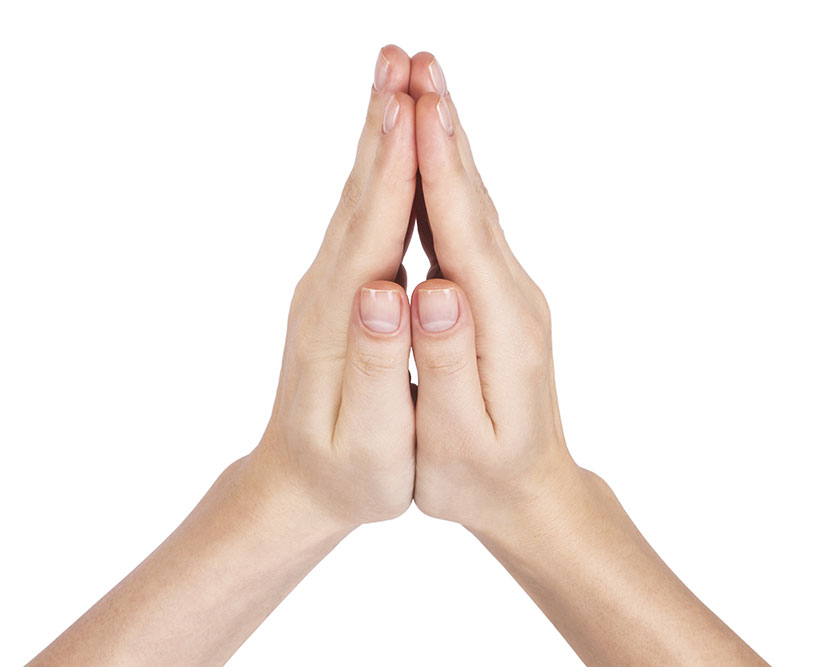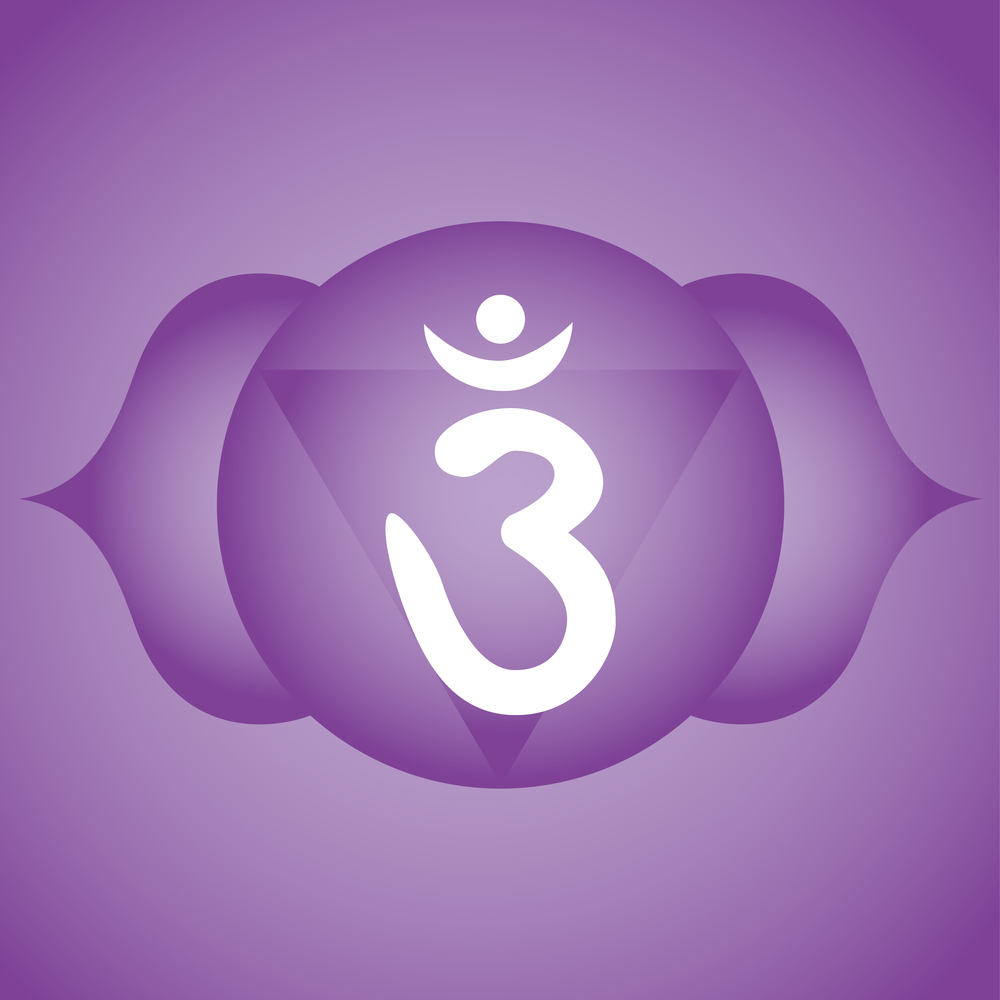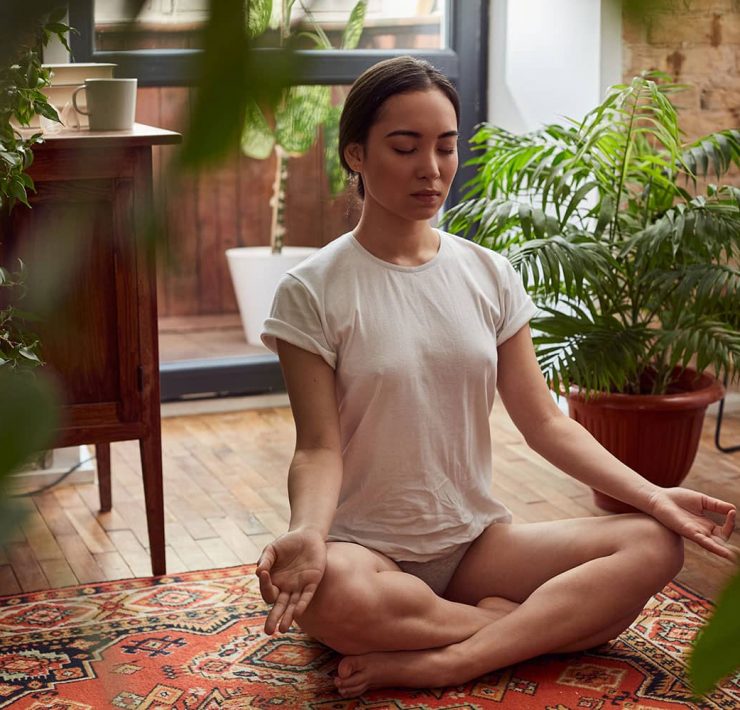
As a trained yoga professional and Ayurvedic practitioner, Donna goes…
In yoga, there are many mudras you can incorporate to complement meditation and to transition through poses. Though, there is a significant reason behind each Mudra that influences and impacts energy in our bodies. For Anjali, this is a mudra of devotion and gratitude.
Often this Mudra feels customary and you see this throughout yoga. It’s associated with aiding meditation and connection to our spirituality. Anja is a Sanskrit word that signifies “salutation.” Its other interpretation is “offering.” Mudra means “gesture” or “seal.” Thus, in English, it’s interpretation would be “salutation seal.” This gesture, but, represents more than a greeting to others. It serves as a posture that has profound changes within ourselves. These impacts are not only physical but spiritual, mental, emotional, and physiological.
It may not be easy to see how mudras influence our mindset. But when the importance of the mind’s connection to the body, we begin to see its power unravel. Our fingers represent our consciousness. Each finger has a different representation from fire to air, earth to water. Our digits represent our connection to the world.
Benefits Of Anjali Mudra

As there are many types of mudra postures, there are several interpretations. This depends on what culture you see this posture. The meaning most for Anjali mudra is often seen through the Shaivism gesture. According to Shaivism, mudras consider a reflection of the self. That means that this posture helps the individual become more in-tune with themselves.
So, when we incorporate mudras into our practice, it works as a bond to align our body with the energy. For Anjali mudra, we’re igniting the strength of the divine. Through practice, we are benefiting from aligning ourselves and becoming closer to divinity.
Helps To Calm The Mind

Our minds are influential, and that’s why it’s also imperative for us to recognize that it’s not always easy to calm ourselves down. We’re continually trying to find ways to find solutions in our lives or rethink the decisions we’ve made. Anjali Mudra helps us reconnect with our thoughts and allows them to move freely in a non-judgmental space. Allowing a stream of consciousness to flow, we accept them, and in turn ourselves. In this instance, we’re able to reduce stress as we’re confronting issues. Also, while we are facing challenges that may be troubling us in our conscious day-to-day life.
Promotes Awareness

Performing Anjali Mudra can help intuitively. Just like the affirmation or intent, try using a mantra by saying, “Tell me what I should know.” This sort of statement can help us think by letting information in the form of images, phrases, or even colors. Everyone yields different information based on their experiences. How you interpret this information is individual to you. All the answers are inside of us. Anjali Mudra can help guide us to them.
With this type of awareness, we’re also able to understand how we react to circumstances. Anjali Mudra enables us to make a note of our behavior and notice it’s implications. By allowing us to be within the present moment, we can answer these questions. We can see how we can make changes to prevent undesirable circumstances.
Optimizes Brain Function

When forming Anjali mudra, we are also uniting the two hemispheres of our brain. The left that we attribute our logical and technical attributes and our right, which we are more creative. When forming Anjali Mudra, we are bridging these two and creating a balance, and in doing this, we improve our concentration and focus.
With Anjali Mudra, the brain is given signals as our fingertips touch. Our hands have nerves that shoot signals to our brain and offer a plethora of information. When we combine our hands through intent and within a meditative state we are sending a message to our minds to recognize that we are whole and present.
Anjali Mudra And The Ajna Chakra

With repetitive practice, Anjali Mudra stimulates the third eye. This influence is on the Ajna chakra. The Ajna chakra rests on our forehead, between our eyebrows. This chakra helps us to see the reality around us and also what is not in plain sight. This third eye chakra is often the focus of where some would attribute their abilities of psychic capabilities.
Anjali Mudra is familiar because of its activation of the Ajna chakra. We’re familiar with this chakra as it connects to the third eye. This chakra’s energy enables us to live in spiritual contemplation. It helps us experience a deeper reflection on ourselves. The power of the Ajna chakra allows us to have guidance from within. To witness the truths of our reality unfold before us by being mindful in each moment.
When this chakra activates, it elevates the synchronicities between the brain’s hemispheres. This heightens our awareness and understanding. This is why the importance of Anjali Mudra resides in also the intention when it is being performed. It enables us in a multitude of ways to align with ourselves and bring us closer to divinity. As the posture holds such power, it’s important that we are mindful of our words.
Anjali Mudra How-To

If you’re familiar with performing Mudra’s this may seem like necessary information. However, it’s always a good reminder to review a proper setup.
- Sit with legs crossed. Keep the back straight.
- Touch the hands together and press the fingertips together, like in prayer. Don’t apply any pressure; touch the fingertips and the palms to one another.
- Keep the hands close to the chest, near the heart. Pressing the thumbs close to the breast bone.
- Draw the shoulder downwards, maintaining a straight posture.
- Breathe deeply, focusing on the intent of Anjali mudra. The objective of the mind and its influence on the body. Focus on what this intent means to you. Focus on what gratitude means to you.
- Stay in this pose for as long as it’s comfortable. Usually recommended to sit in this position, or lay in savasana – corpse pose, for up to five minutes. If your arms start to give from staying up too long, try bringing them down lower towards your lap.
- Be mindful of what’s happening around you. Be mindful of any sensations that may be around you. With the repetitive practice of Anjali mudra, you may notice a change in the vibrations around you.
The Science Behind Anjali Mudra

Many will associate Anjali Mudra with religion and prayer, as it is seen worldwide when practicing yoga. But, it serves as more than a posture but has scientific significance. Our fingers encapsulate nerve receptors that can determine sensations. From hot to cold, soft to rough, they’re able to offer information to our brain’s cerebral cortex.
But let’s talk about the rest of the body. As known in Ayurveda, the right side of our bodies represent Pingala or masculine energy. The left side of our bodies represents Ida or feminine energy. This masculine energy aligns with the sun. While the feminine energy is often represented with the moon. When performing Anjali Mudra, we are also balancing these energies. This brings our body’s electromagnetic field to a balance.
Even the way that we keep our hands at our chest has significance. Pressing the thumbs into the chest helps to activate a reflex point of the vagus nerve. This nerve sends out a multitude of signals throughout our bodies. The vagus nerve is the longest of the cranial nerves and has control of our parasympathetic nervous system. This nerve interacts with every area of our body from our ears down towards our core.
Most notably, it’s also associated with the ability to relax. The vagus nerve helps our bodies recognize threats and even regulate our breathing and heart rate. Research has shown that stimulation of this nerve activates feelings of safety. That is why this posture, scientifically, offers so much value in practice.
Affirmations To Use With Anjali Mudra

As we know, our minds are powerful and can influence our behavior. Affirmations can help us take control of our thoughts by making a conscious statement. A short declaration can bring positivity to conscious thinking. When carefully constructing a message that resonates with something meaningful to us, we help ourselves combat negativity and contribute to shaping our reality.
Step 1: Construct a Command. Create an affirmation that is structured to target something that resonates. Using language like “I am…” gives our subconscious mind an order that interprets this as something that it follows because it is something that you’re accepting is a part of you.
Step 2: Present Tense Matters. The present tense is a significant factor when writing affirmations, as there is a lot of power when using the present tense. When you speak as if you already have something, it helps your mind create imagery of what that must look like. For example, instead of saying, “this year I am going to be more accepting to change,” use language like “I am grateful to accept change.” Especially for Anjali Mudra, it’s about being grateful for what we already have and for what we already know, and for what questions we have can already be found within ourselves.
Step 3: Decide. Now, this one sounds easy, but decisions can be difficult once you decide what you want, language again, matters. For instance, if you want to open the door to more job opportunities, try not to say, “I don’t shut the door to new opportunities.” In this instance, the negative word “don’t” is something that our subconscious mind doesn’t recognize as negative. Use positive wording like, “I am open to new job opportunities.”
Step 4: Keep It Simple. Affirmations are intended for repetitive use to drill that positive language into our brains. Remember something short and to the point. For Anjali mudra, consider phrases like:
- I trust my inner guidance.
- I forgive the past and learn through my experiences.
- I am one with the universe as the universe is within me.
- I align myself with all that there is.
- I am at peace. I am open to what the world presents to me.
Crafting an affirmation is deciding on something that you want to happen in your life. Ask yourself what resonates with you? Make that decision and craft language that helps support you in adopting that into your life. Once you do this, repetitive use will build new pathways in your mind. Try to embrace it, as it bridges this into your waking life.
Anjali mudra represents more than incorporating a mudra into our practice. The mudra serves as a reminder to nurture ourselves. To work with others in a way of grace, appreciation, and peace. The Mudra brings balance to our minds. It encourages us to focus and bring ease to our emotional state. All for preparation to better our meditation and reflection.
Once you receive this Mudra, you will recognize how much it benefits you. It will help to shed away the ego and help to recognize our humility. This is a gesture that progresses into transcendence and spiritual awakening. It is a mudra that will help us understand its meaning through exposure and practice.
What's Your Reaction?
As a trained yoga professional and Ayurvedic practitioner, Donna goes far beyond just writing about holistic concepts. With your health and wellness in mind, she happily provides an abundance of thoughtful and well-written information.














